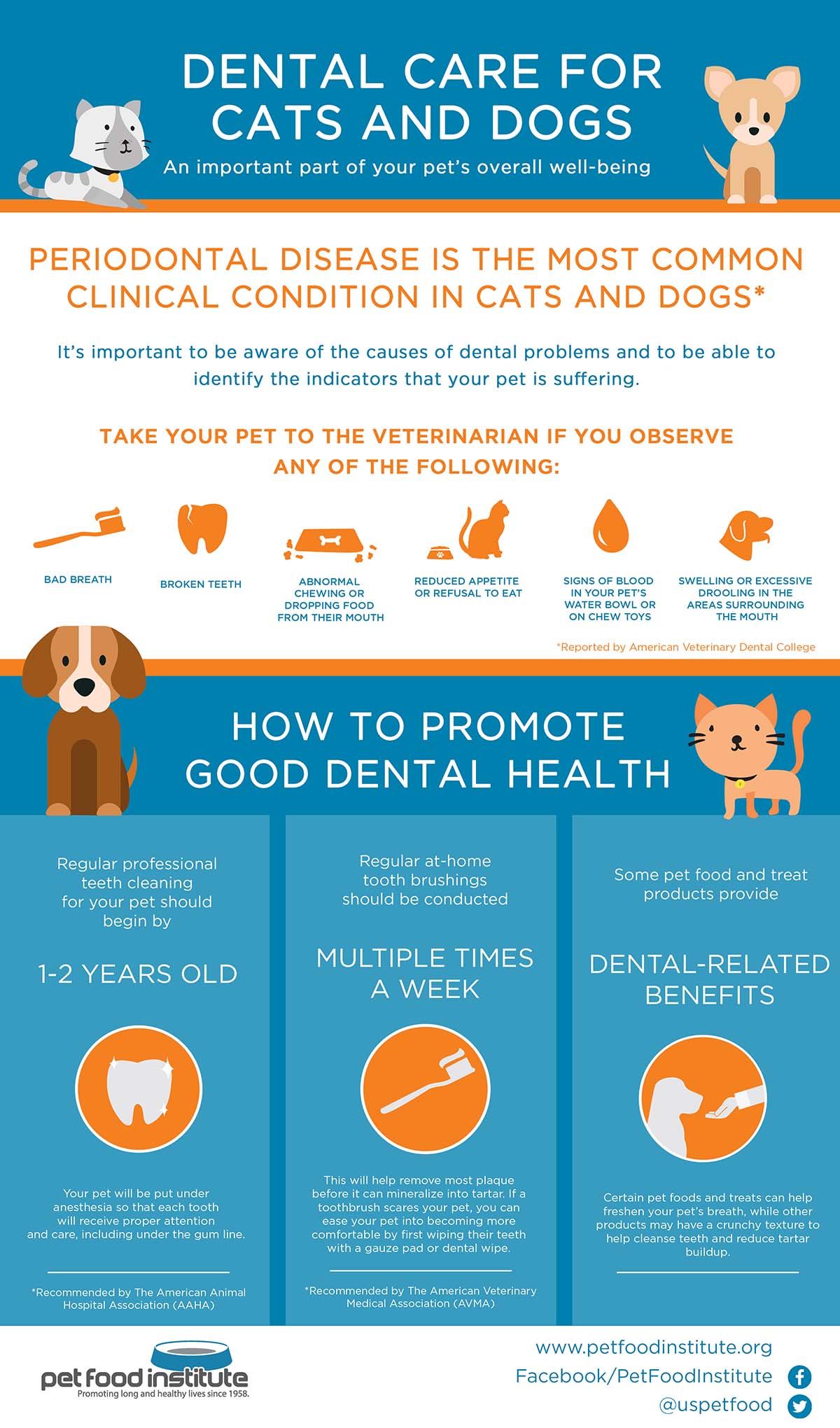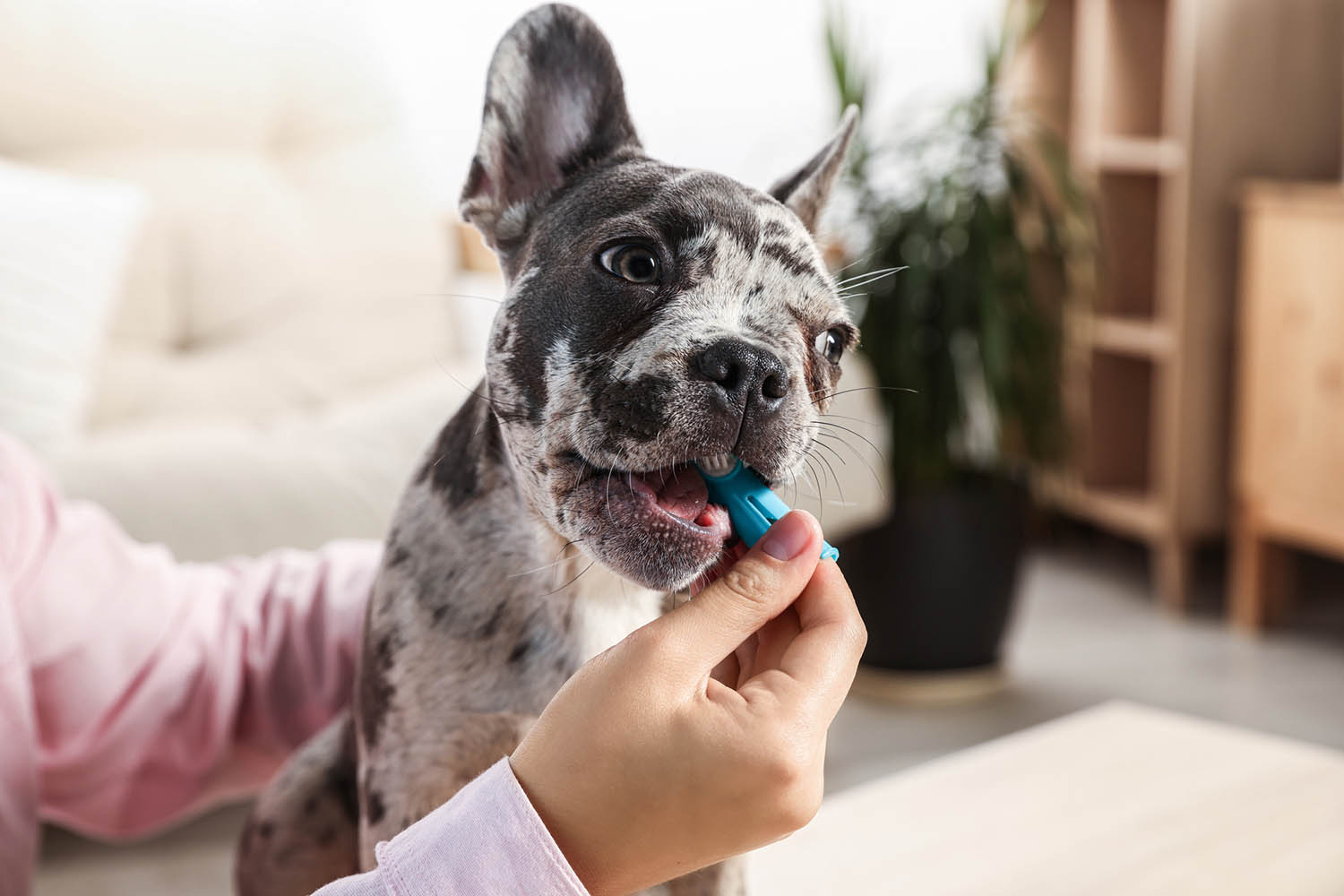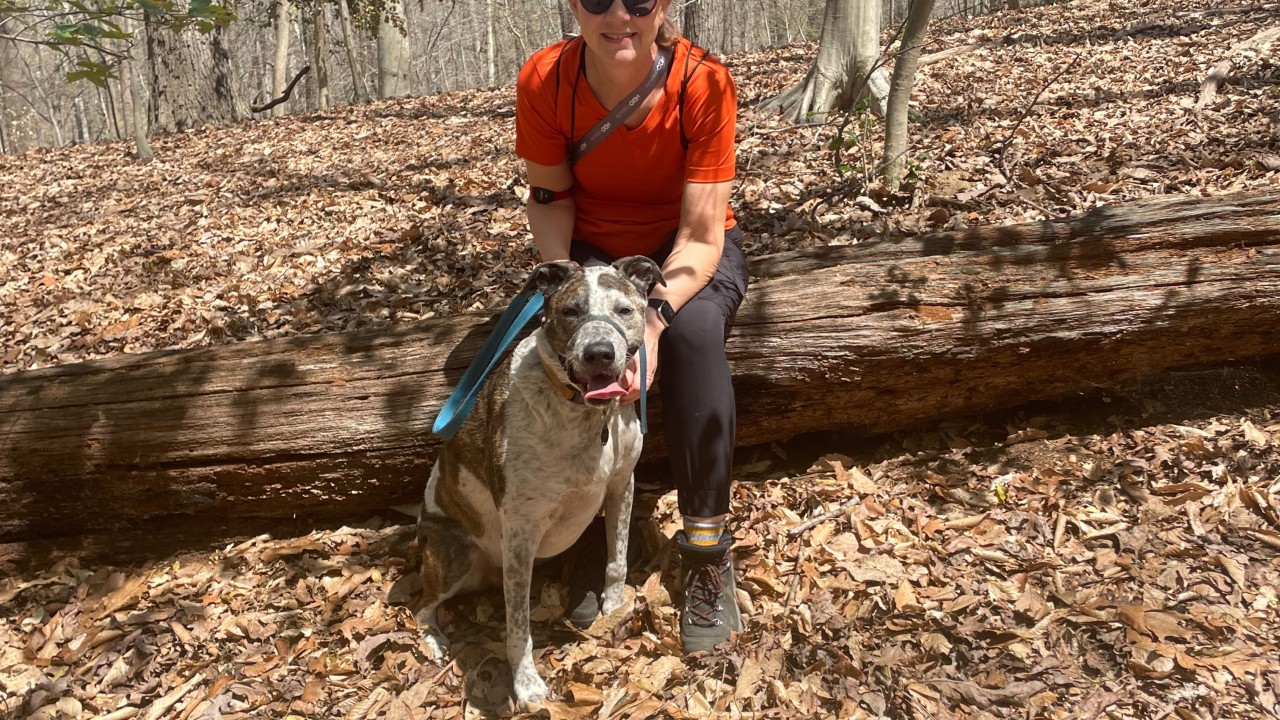Pet Dental Health Routine
Dental health is an important part of a dog or cat’s overall well-being. A regular oral health routine will combat bad breath, remove tartar and bacteria, and ultimately helps prevent periodontal disease, a painful and preventable oral health condition.
Keep your pet’s teeth clean and healthy with these tips:
- Veterinarians recommend brushing your pet’s teeth daily or every other day, as plaque can be brushed away easily before it hardens, which takes between 24-48 hours. Start by using a pet-specific toothbrush and toothpaste, which is formulated to taste good to dogs and cats, and includes bacteria-fighting enzymes. Human toothpaste contains ingredients that are toxic to pets and should never be used to brush their teeth.
- If a toothbrush scares your pet, you can ease your pet into becoming more comfortable by first wiping his or her teeth with a pet-safe gauze pad or dental wipe. These options are similar to a toothbrush and are a great way to get cats or dogs comfortable with their teeth being touched. Take the time to learn other tips on how to train your pet to be comfortable with brushing.
- Experts recommend regular professional teeth cleanings from a veterinarian, starting at one or two years old, depending on a cat or dog’s size. These cleanings should be done annually and will include an oral exam to detect any issues or concerns.

Signs of Pet Dental Health Problems
Dental disease in pets, especially dogs, is extremely common. It is estimated that more than 80 percent of dogs over the age of three suffer from dental disease. Dental issues in pets start when plaque hardens into tartar below the gum line and becomes damaging and infectious to tissue and the jawbone. Periodontal disease, also known as gum disease, can lead to serious health issues beyond bad breath and tooth loss, including kidney, liver and heart damage.
It’s important to be aware of the causes of pet dental health problems and to be able to identify the indicators that your pet is suffering from periodontal disease, which include:
- Bad breath
- Broken teeth
- Teeth that are discolored or covered in tartar
- Abnormal chewing or dropping food from their mouth
- Reduced appetite or refusal to eat
- Signs of blood in a pet’s water bowl or on chew toys
- Swelling in the areas surrounding the mouth
Avoiding regular dental care for dogs and cats can lead to many of the same oral health problems as humans experience, including:
- Broken teeth and roots
- Periodontal disease
- Abscesses or infected teeth
- Cysts or tumors in the mouth
- Malocclusion, or misalignment of the teeth and bite
- Broken or fractured jaw
- Palate defects such as cleft palate
Dental Chews
In addition to professional cleanings and an at-home care routine, dental treats and chews are specifically designed to provide dental-related benefits to dogs and cats. These treats and chews are meant to remove plaque buildup and often include ingredients that help to clean a cat or dog’s mouth. Many pet dental treats even freshen breath!
When pet food manufacturers make a dental-related claim on the label, the package will also communicate how that effect is achieved (e.g. “with ridges to scrape teeth” or “with peppermint to help freshen breath”). These claim guidelines are included in the model regulations for pet food published by the Association of American Feed Control Officials (AAFCO).
Resources:
https://www.avma.org/resources-tools/pet-owners/petcare/pet-dental-care
https://pets.webmd.com/dogs/ss/slideshow-brushing-dog-teeth
https://www.sciencedirect.com/science/article/abs/pii/S1938973608000056



